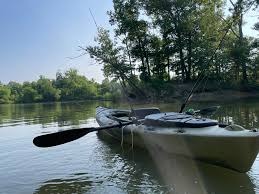
Boats are a hypothesis that requires care and upkeep to ensure they stay looking perfect. One typical concern among boat owners is understanding the way that a boat can sit without running and the potential risks inferred. This article explores the components that influence how long a boat can remain inert, the impact of dormancy, and basic techniques for safeguarding its show during seasons of disregard.
The Impact of Long stretch Idleness on Boats
Boat engines are one of the most powerless parts of inactivity. Right when a boat sits unused for quite a while, development can shape inside the engine, provoking rust and disintegration. The oil in the engine may in like manner be discrete, losing its ampleness in lubing up parts. Expecting the engine remaining parts latent for a seriously prolonged stretch of time, seals could dry out, inciting spills, while the fuel structure could plug up or become contaminated.
Fuel Degradation and Battery Length
The fuel in the tank is another concern. Gas and diesel can ruin long term. Yet again if left sitting in the tank from here onward, indefinitely a truly prolonged stretch of time. The fuel can disengage into layers become tacky, or accumulate sogginess. Making it less suitable when this moment is the best opportunity to start the boat. This can similarly provoke blockages in the fuel lines and injectors. The boat’s battery will regularly lose its charge after some time, especially if it’s not separated or stayed aware during accumulating. A battery that is left idle without running for a seriously prolonged stretch of time could end up being absolutely dead and likely won’t hold a charge any more.
How Long Could a Boat Always Safely Sit?
How Long Can a Boat Sit Without Running? Most boats can sit inert for 1 to 90 days without focal issues, especially in case proper upkeep was done before taking care of the boat. Batteries could regardless hold a charge, and fuel defilement is irrelevant inside this period. Regardless, starting the engine every so often during this time is a good practice. Following three months, issues could start to arise, especially if the boat wasn’t true to form prepared for storing. The fuel could begin to isolate, and the battery could lose immense charge. The engine seals may in like manner begin to get out on the dry opportunity that they haven’t been lubed up. If a boat sits latent for a long while or longer, the risks increase basically. Fuel will presumably ruin, the battery may be depleted, and engine parts could start to rust or seize.
Defend Measures for Long stretch Storing
How Long Can a Boat Sit Without Running? Before taking care of the boat, change the perpetually oil channel. This will help with holding unfamiliar substances back from disintegrating the engine. Add a fuel stabiliser to hold the fuel back from isolating and deterring the structure. Running the engine for two or three minutes resulting in adding the stabiliser promises it flows through the entire fuel structure. Withdraw the battery or use a stream charger to keep it away from losing charge during the limit. Incidentally check and charge the battery to widen its life.
Genuine Limit, Fuel Change and Intermittent Tests
On the off chance that possible, store the boat in a dry, protected spot to shield it from the parts. A boat cover is central for preventing water hurt and shielding the outside. How Long Can a Boat Sit Without Running? If the boat is taken care of outside, guarantee holding shape and development back from framing is suitably ventilated. As referred to previously, adding a fuel stabiliser can help with protecting fuel quality. On the off chance that possible, fill the tank to hold sogginess back from social affairs inside. This will diminish the risk of water corrupting. Whether or not you plan to include the boat for a seriously significant time-frame, discontinuously disapproving of it is truly shrewd. Running the engine occasionally and surveying for signs of wear or mischief will keep the boat in better shape.
What Happens If You Leave a Boat Unattended for quite a while?
Clamminess advancement inside the engine and other metallic parts can incite rust and disintegration. This is particularly upsetting for boats taken care of in tacky or ocean front circumstances. Yet again old fuel can hurt the engine, making it trying to start the boat when this moment is the best opportunity to use it. Fuel lines and injectors may moreover become blocked. A depleted battery is one of the most notable issues for boats left unattended. Overriding a depleted battery can be costly, and recharging it presumably will not be adequate to restore its convenience. If the boat is permitted to be revealed to the parts, the casing and deck can encounter the evil impacts of sun hurt, water interference, and shape advancement. Common cleaning and covering can help with reducing these risks.
Conclusion
All things considered, while a boat can sit inert for a very long time without running, it’s urgent to take real obstacle measures to avoid long stretch damage. The engine, fuel system, and battery are particularly helpless against idleness, and keeping an eye on these areas before limit can make a massive difference. Ideally, boats should be run once in a while or stay aware of through legitimate limit methods to ensure they stay in top condition, regardless, during extended seasons of disregard.



